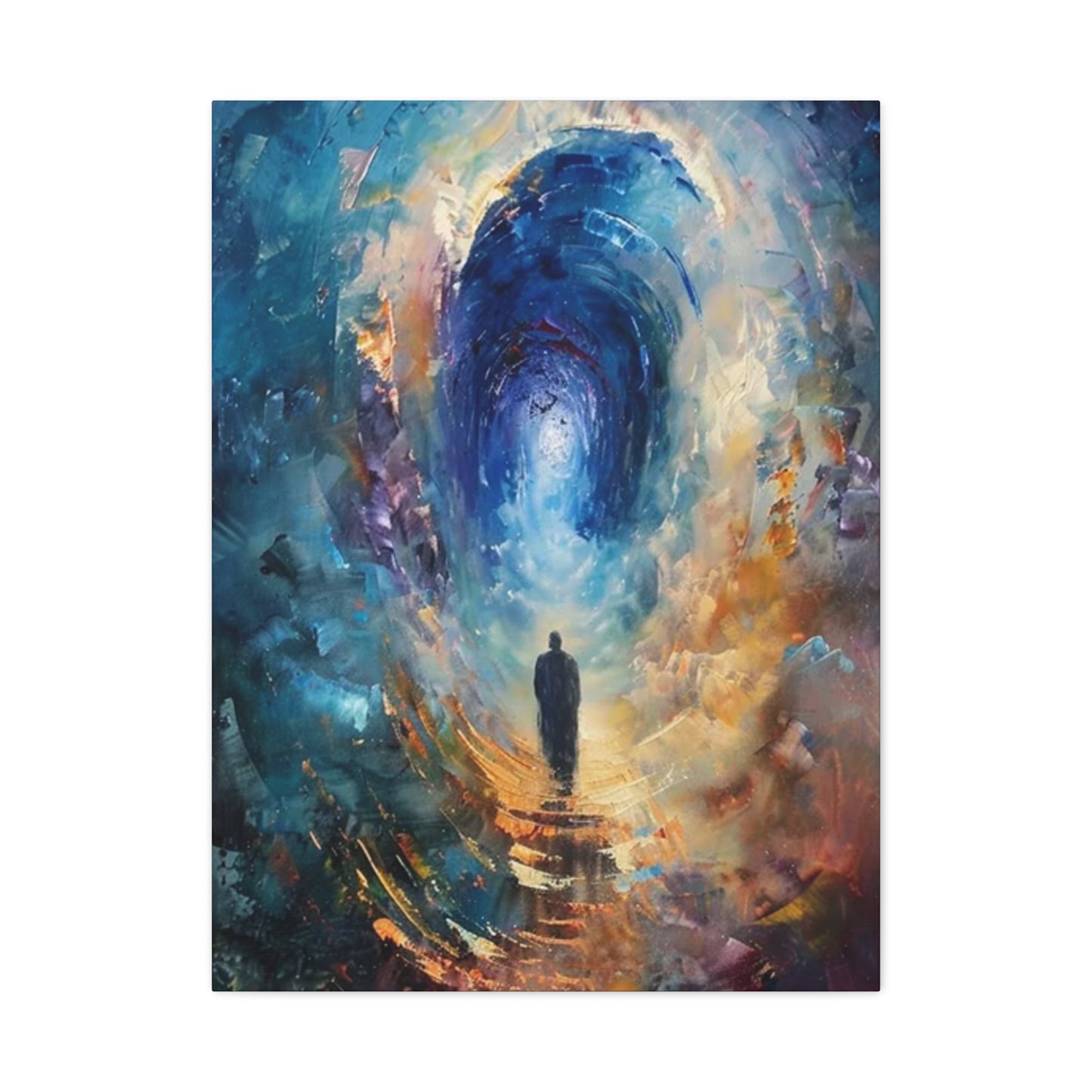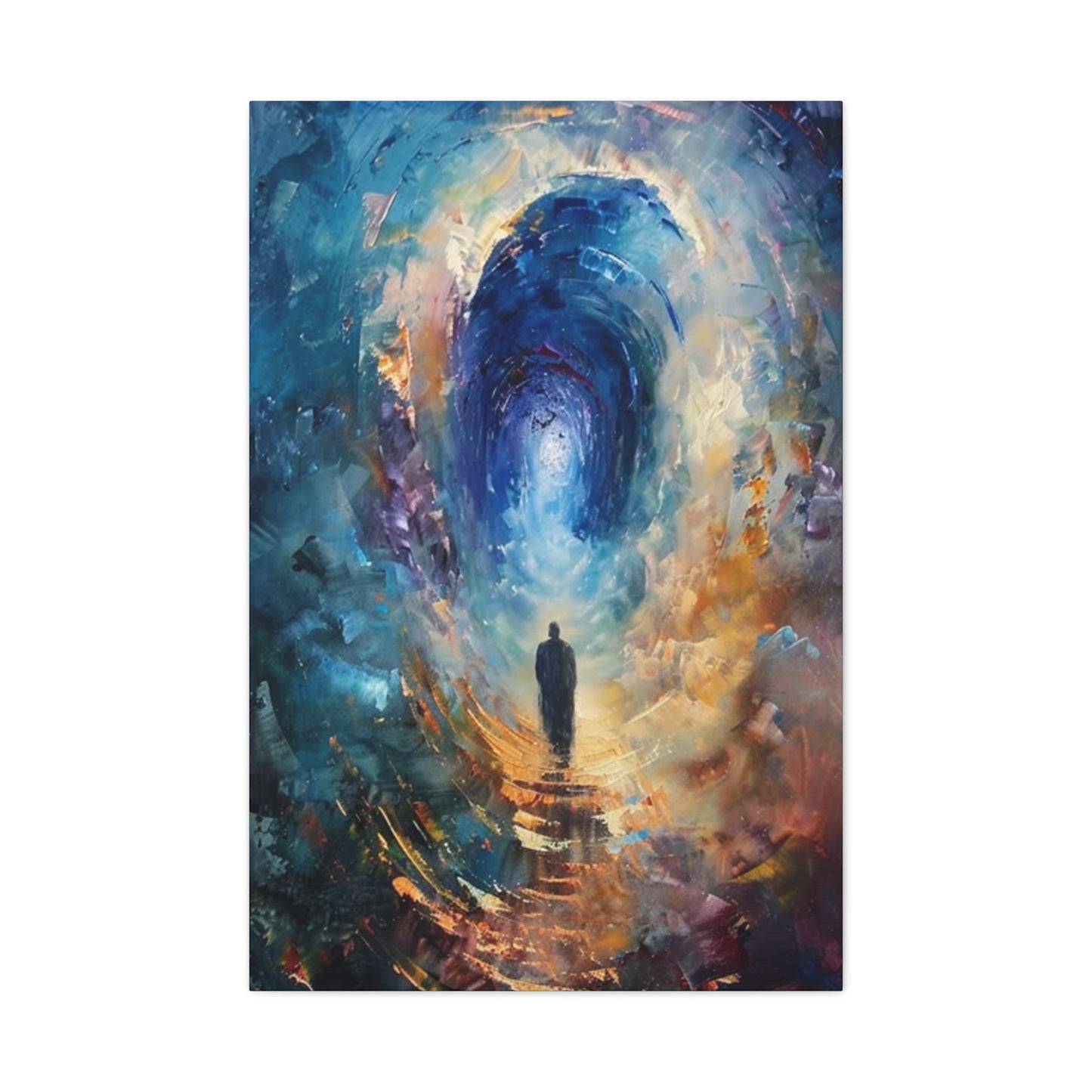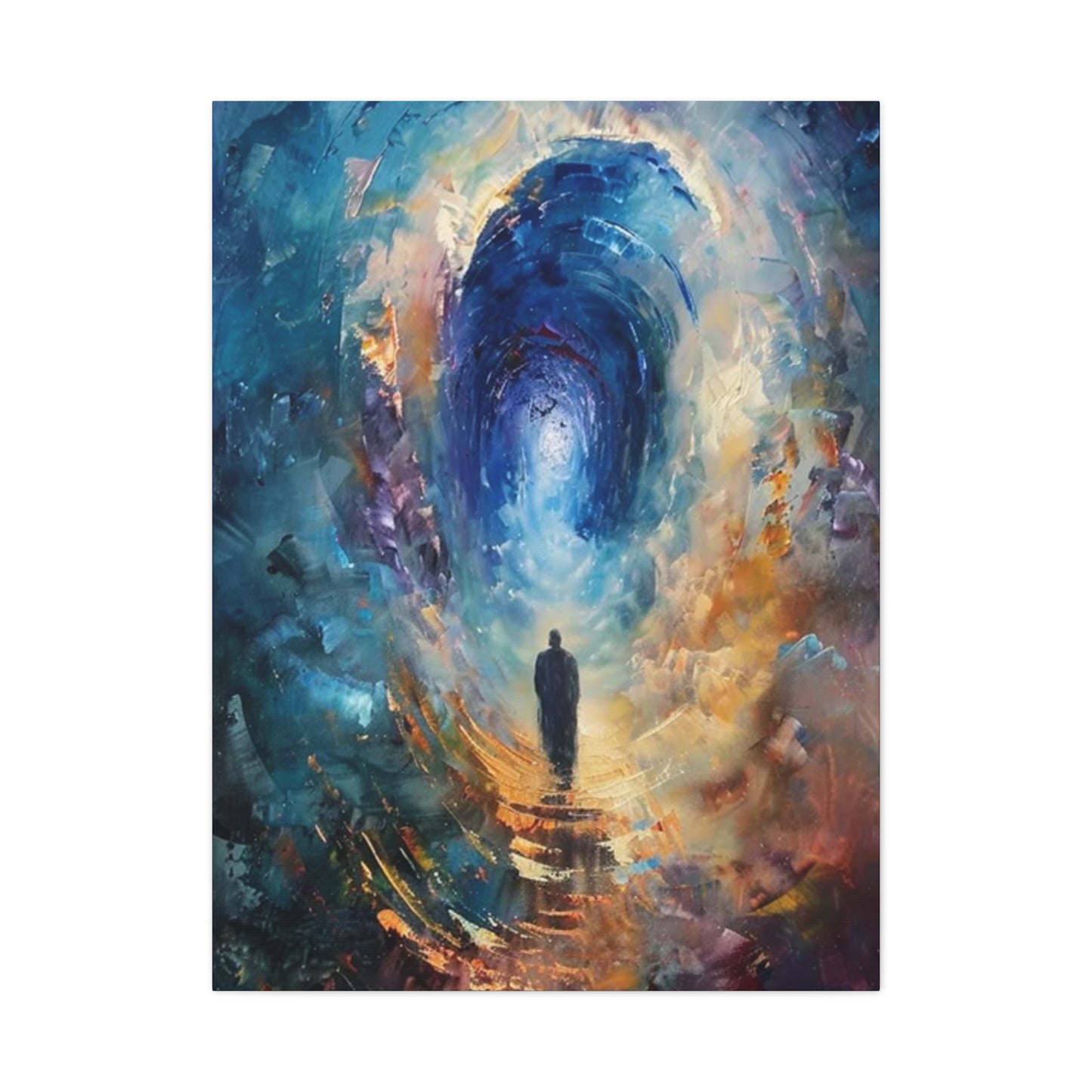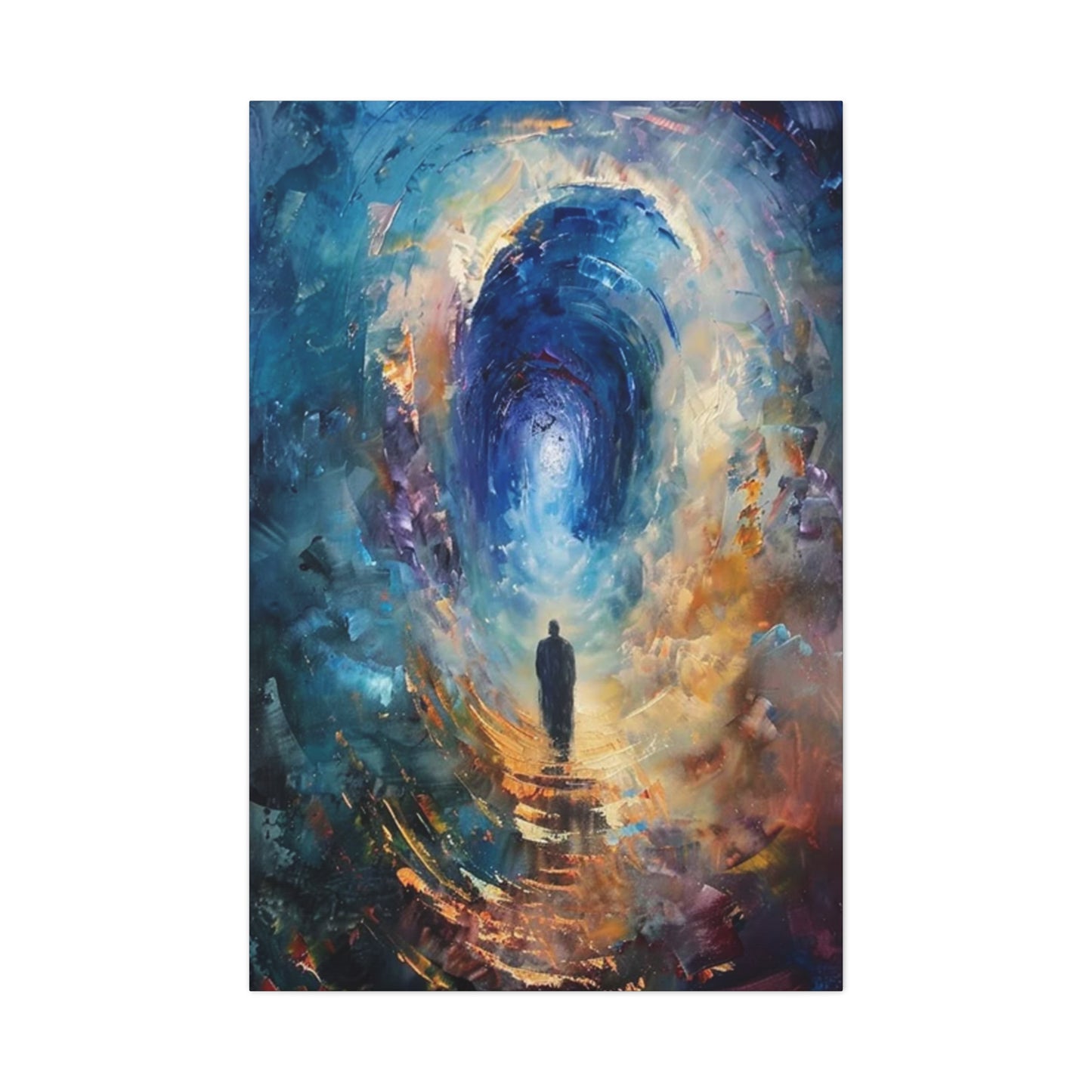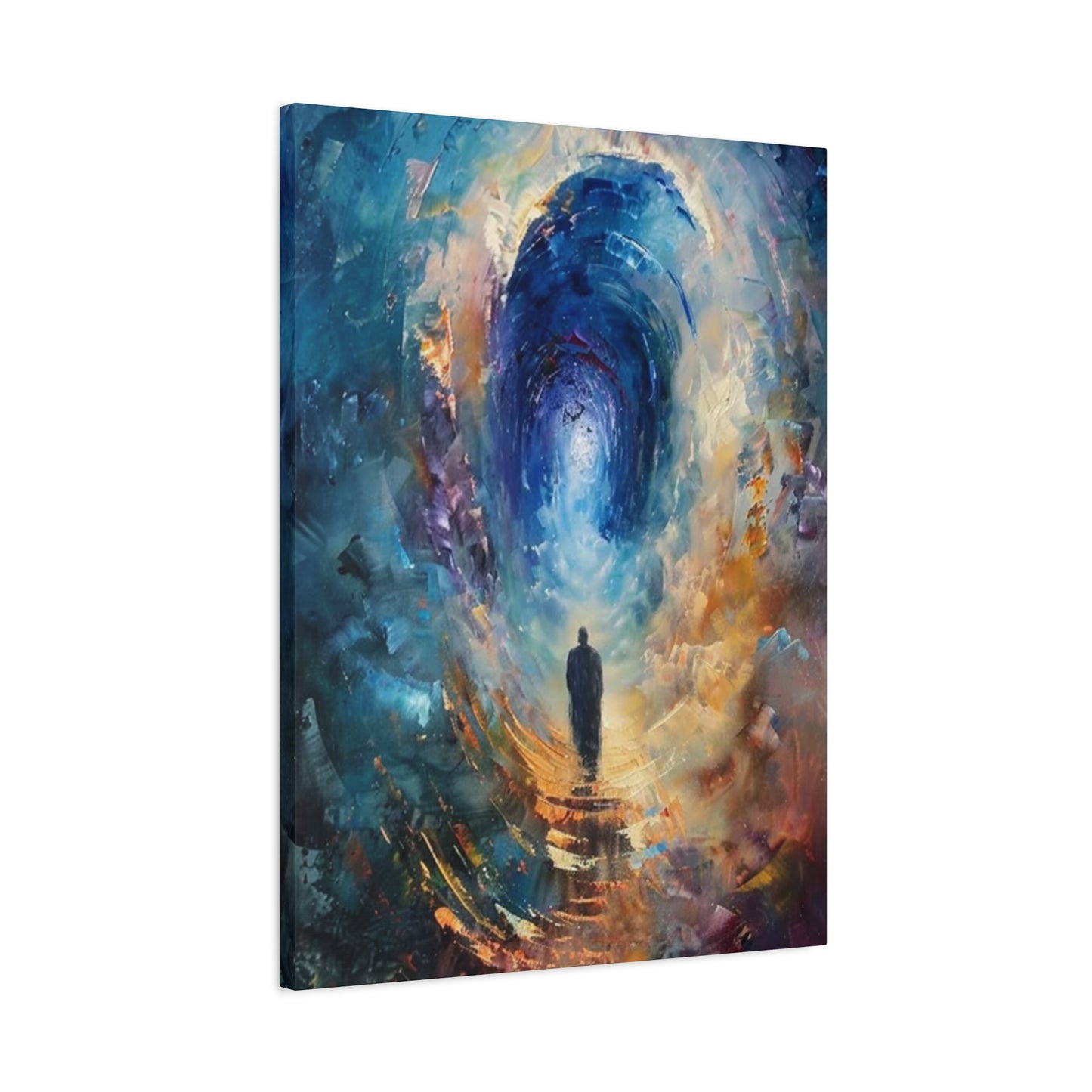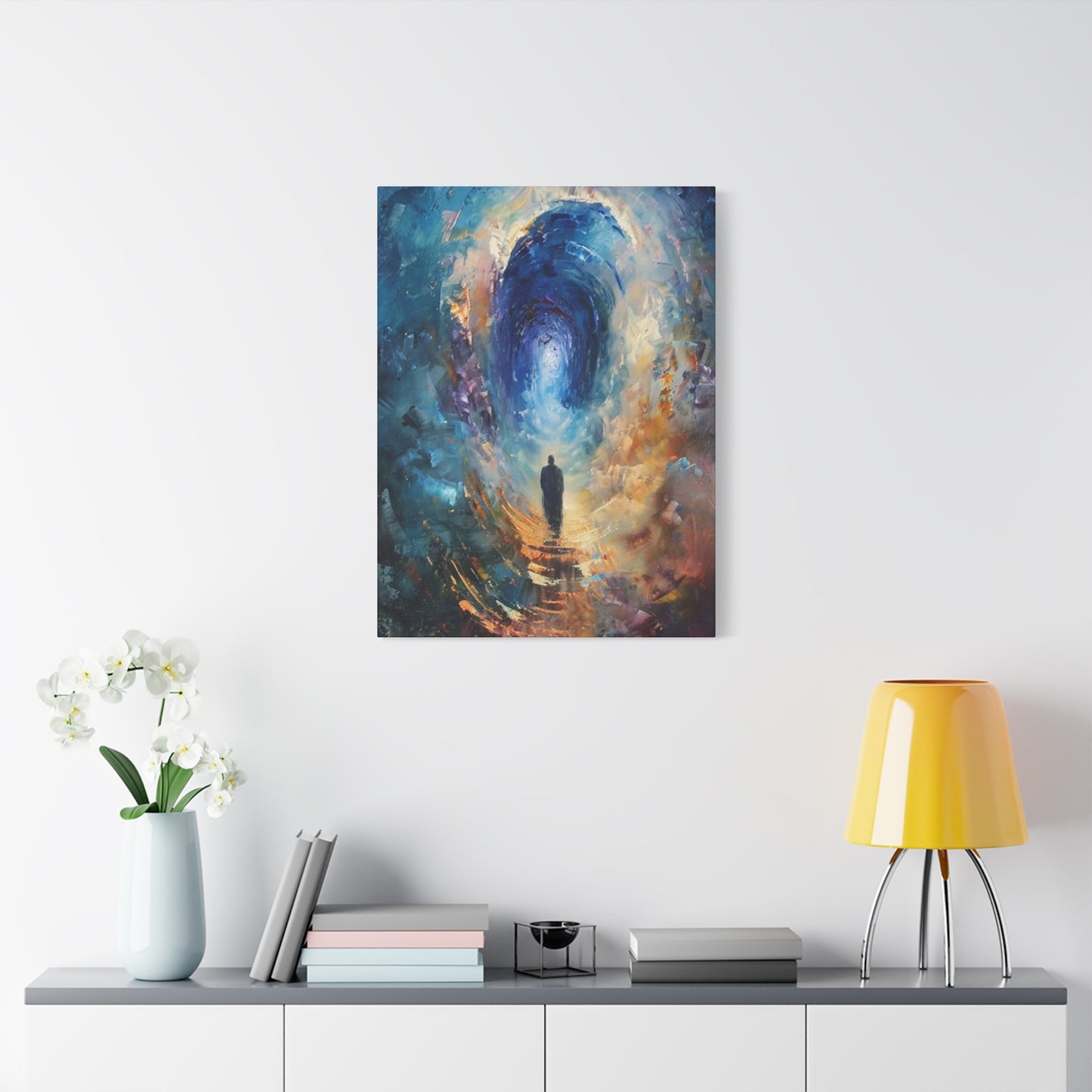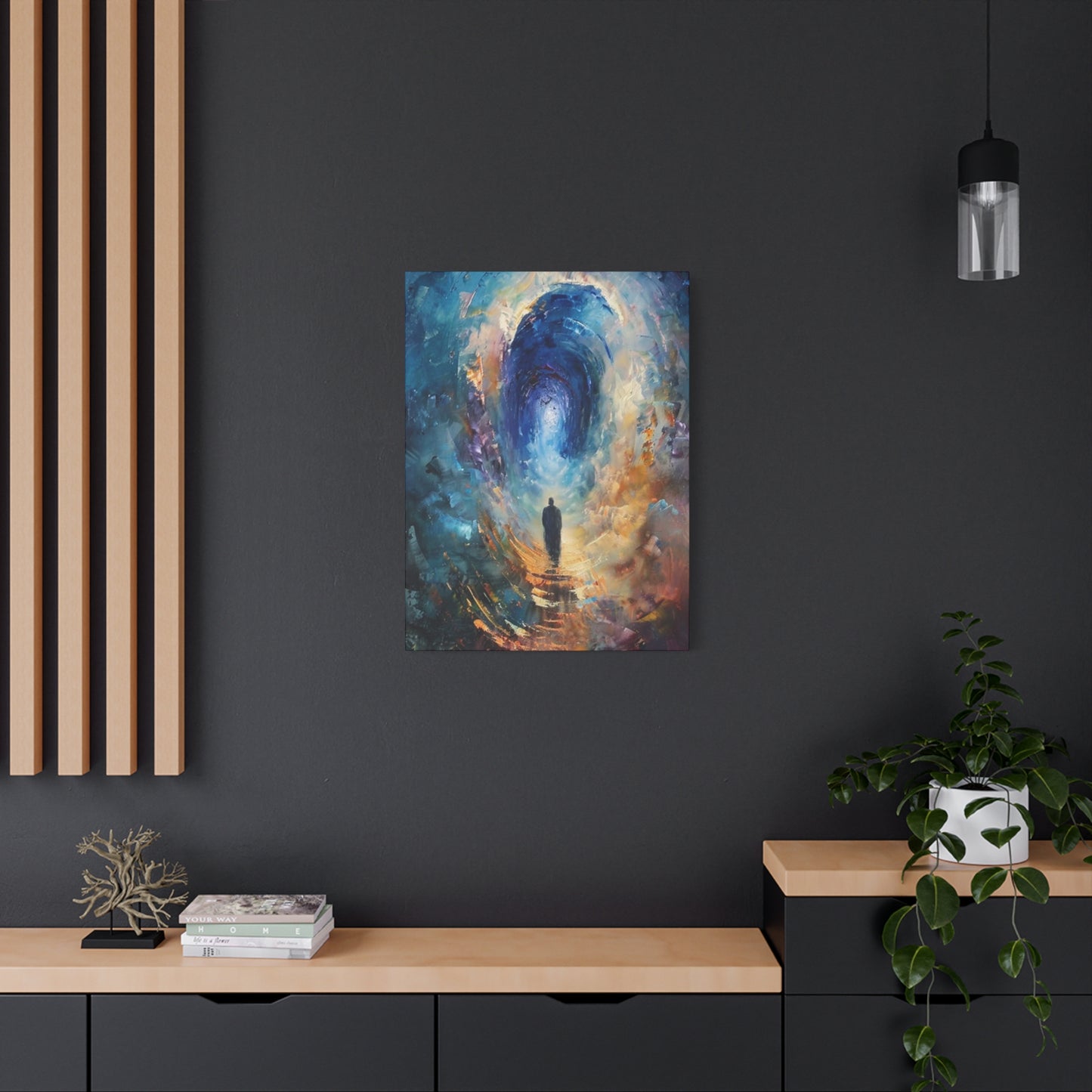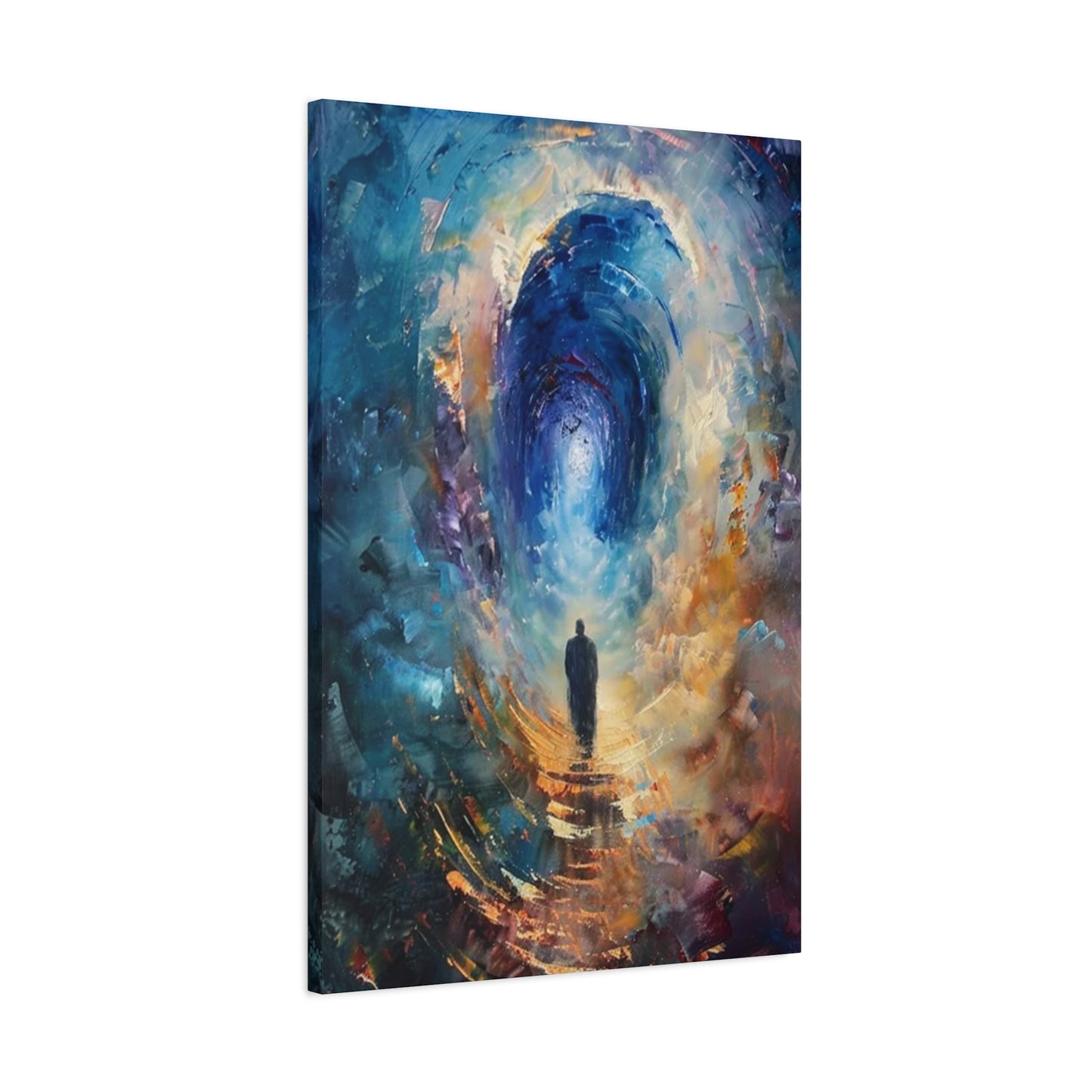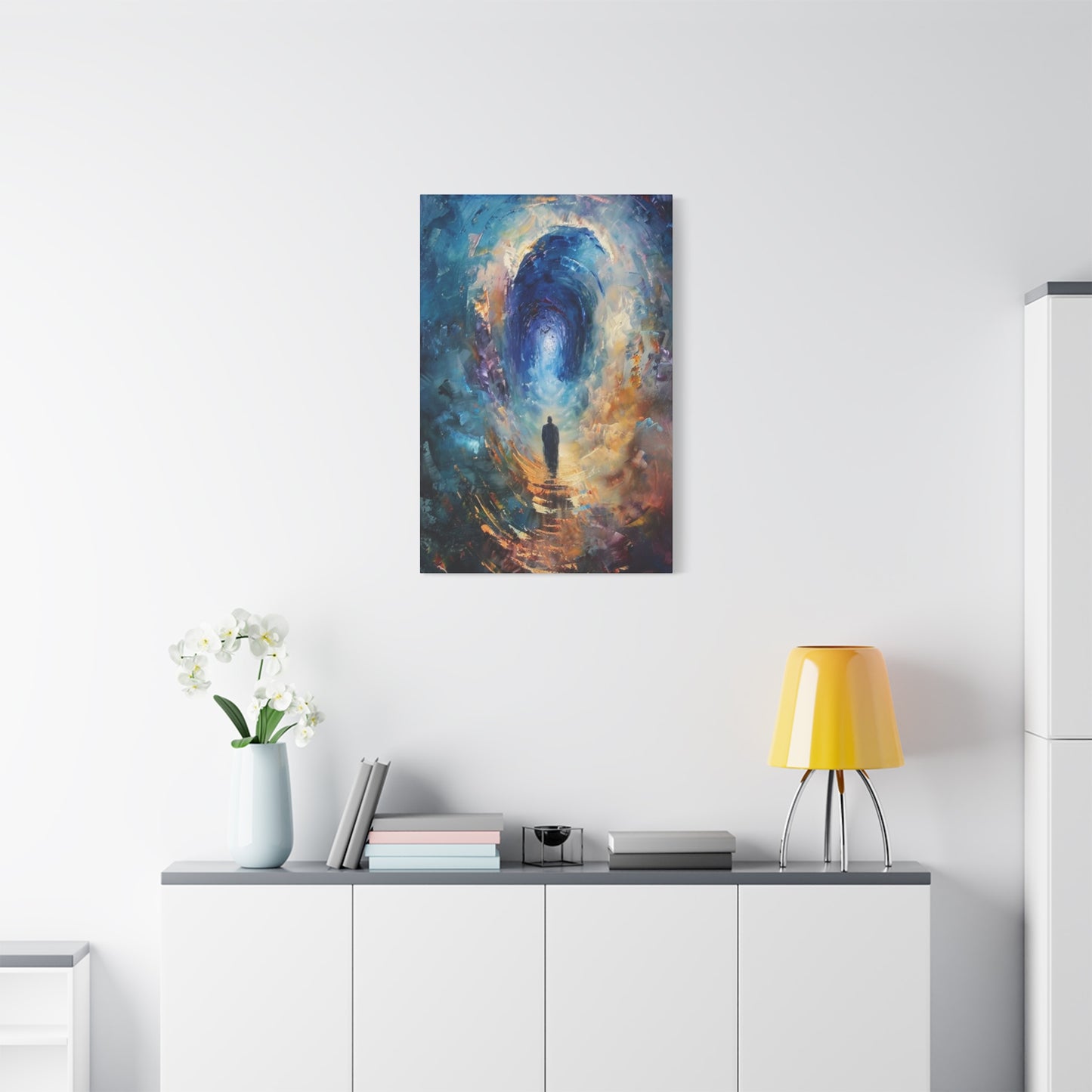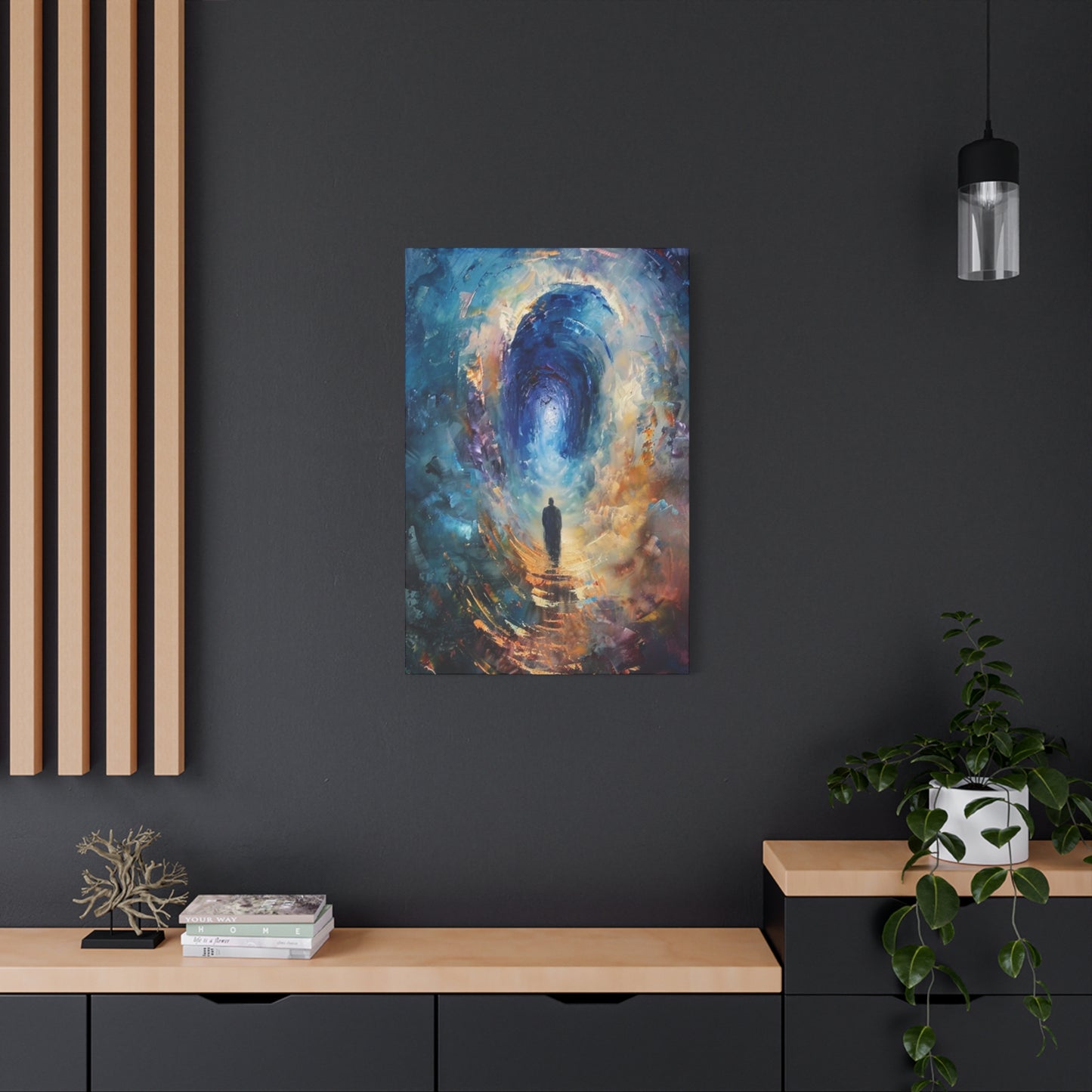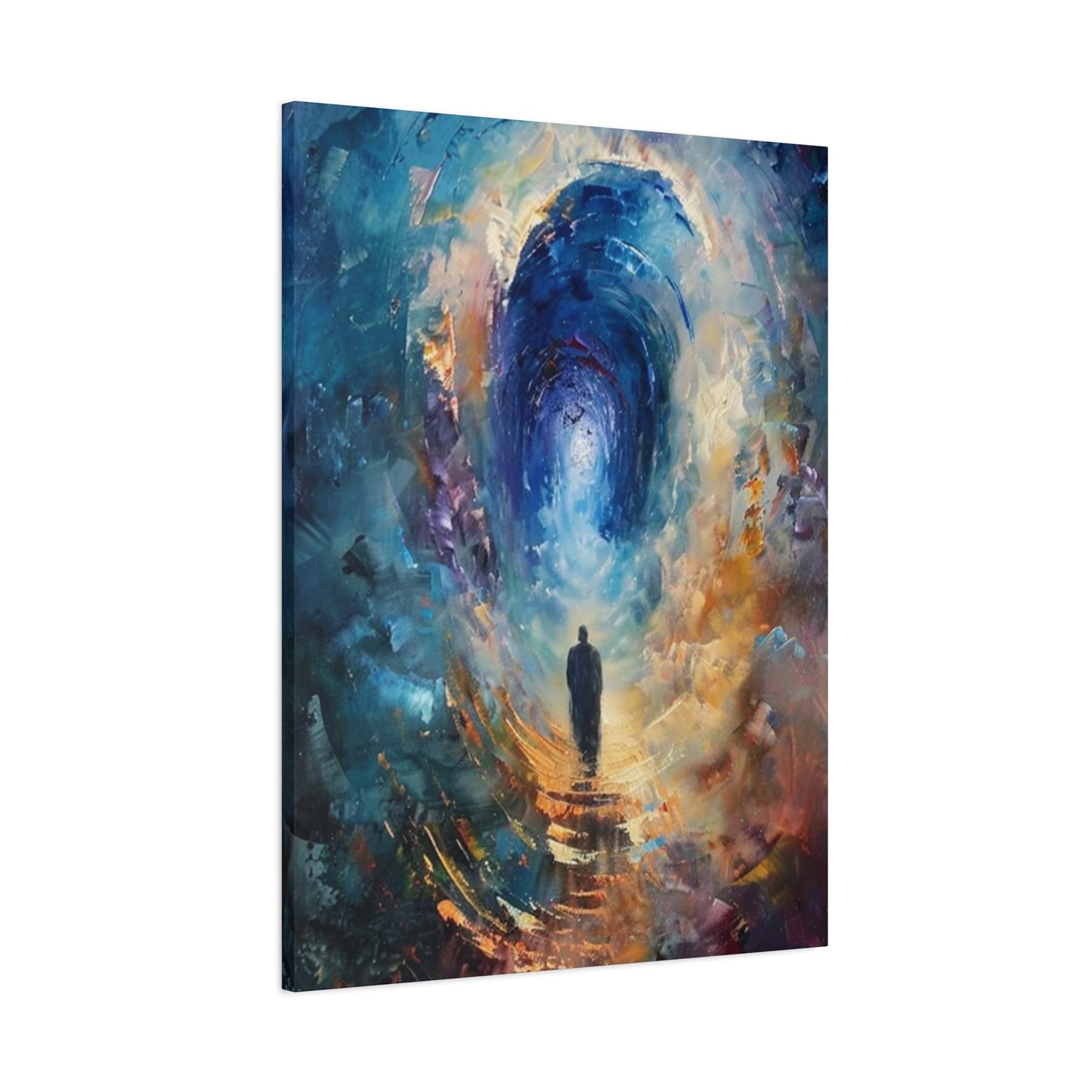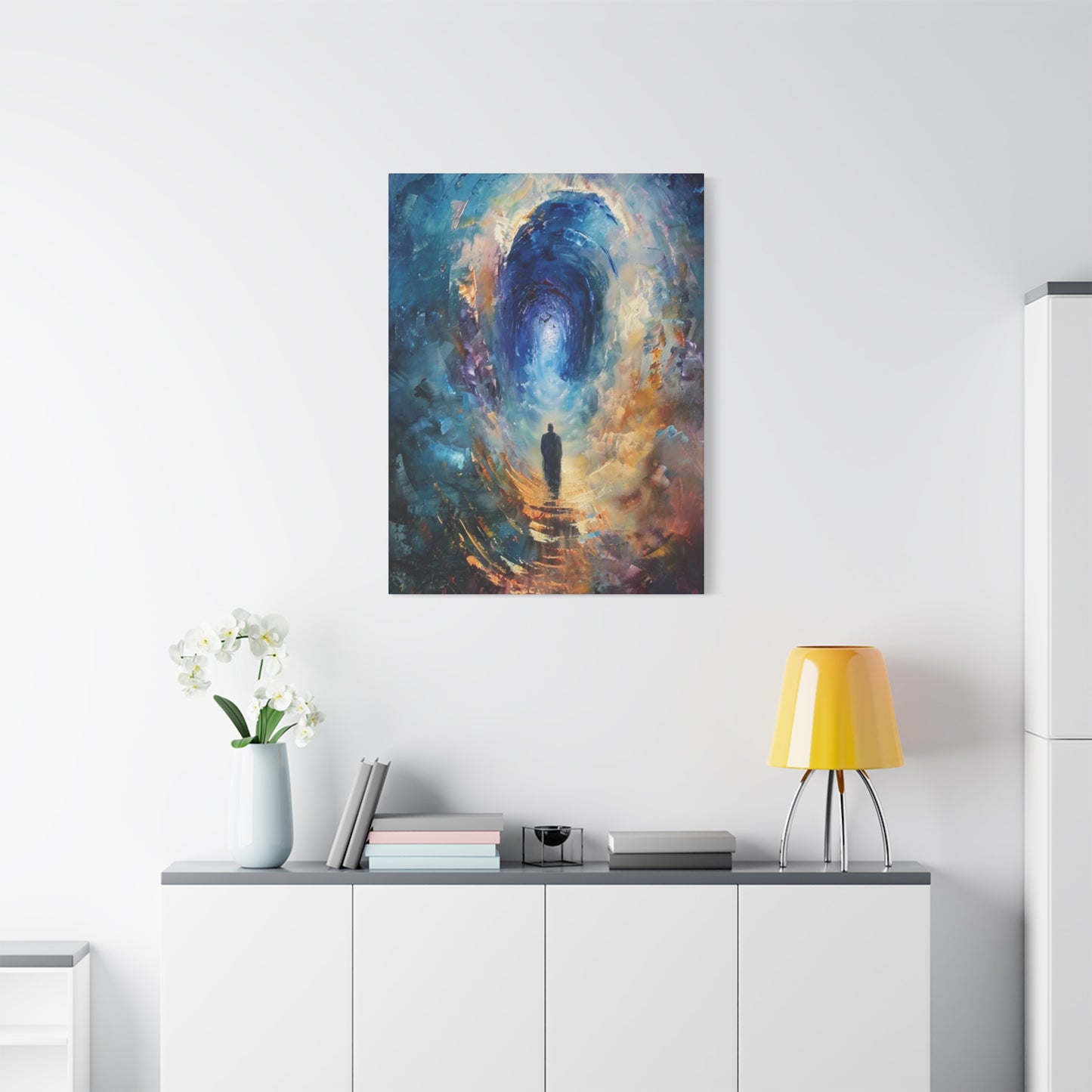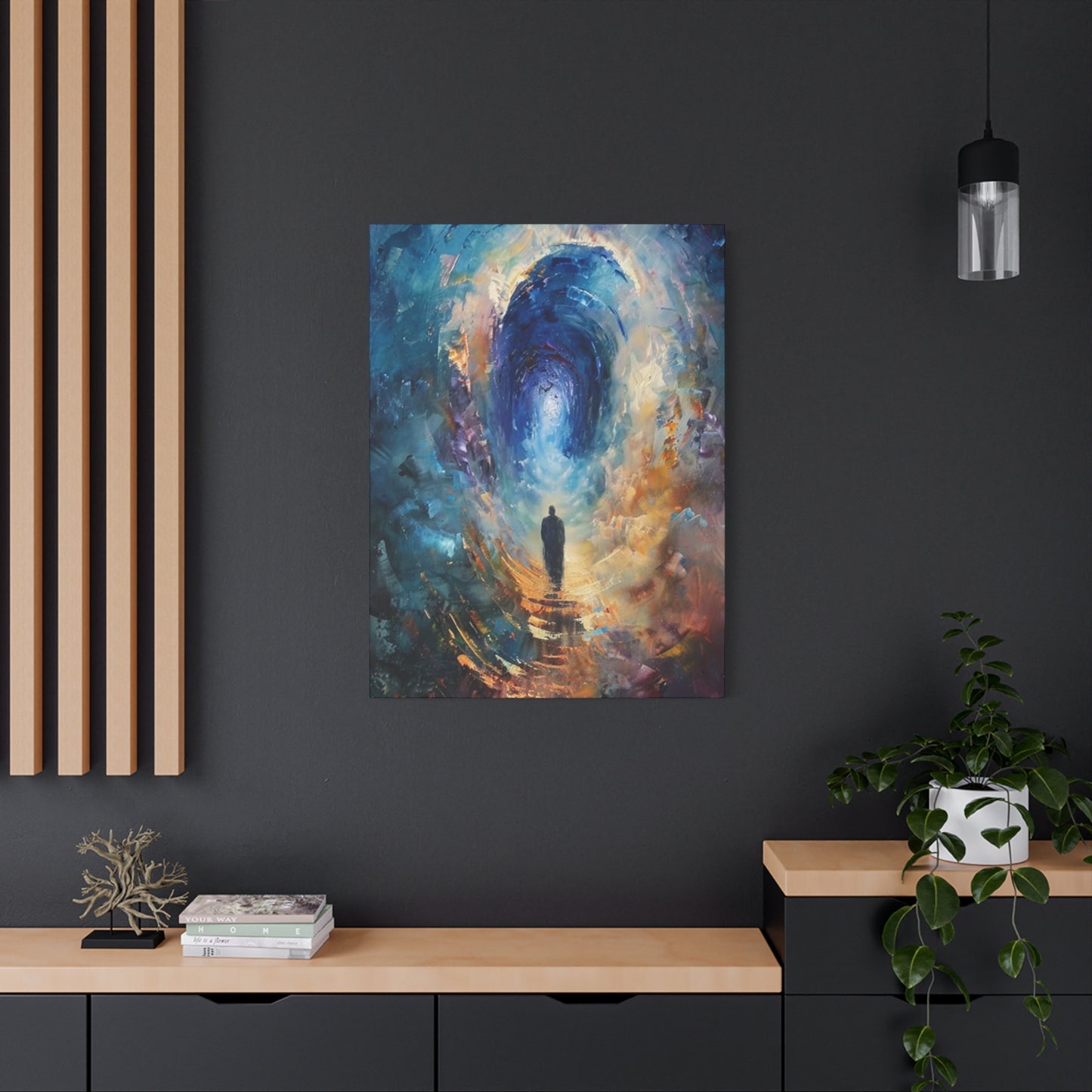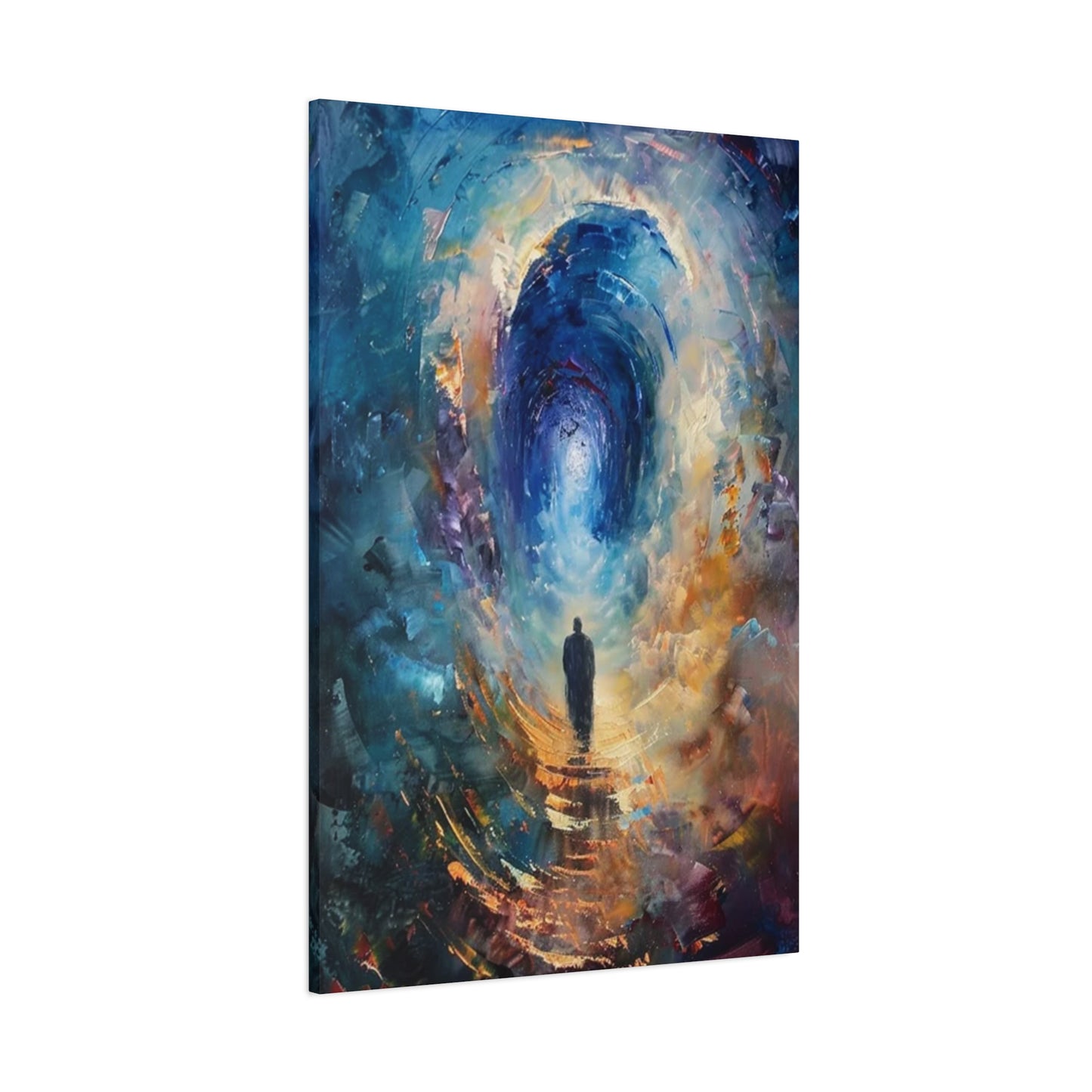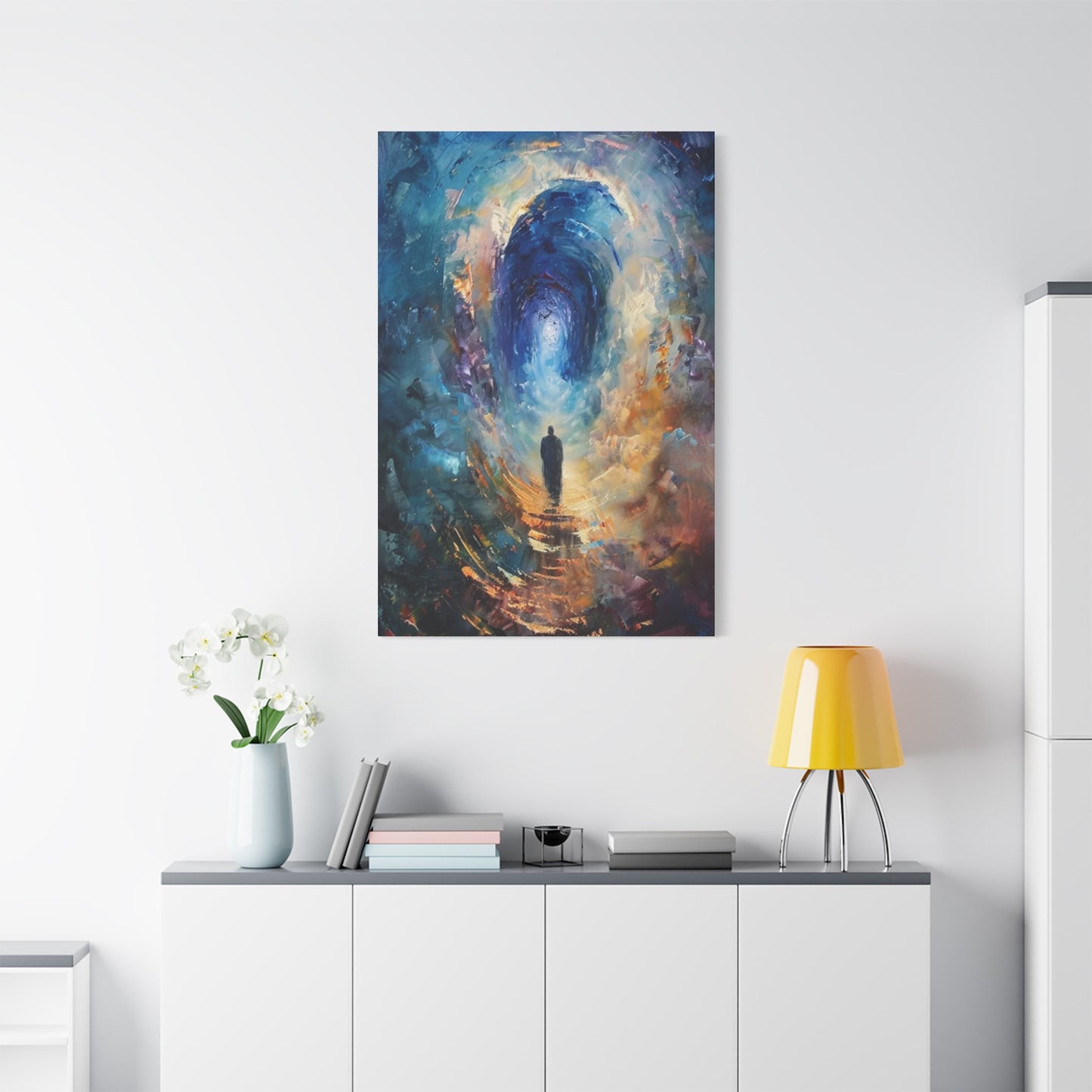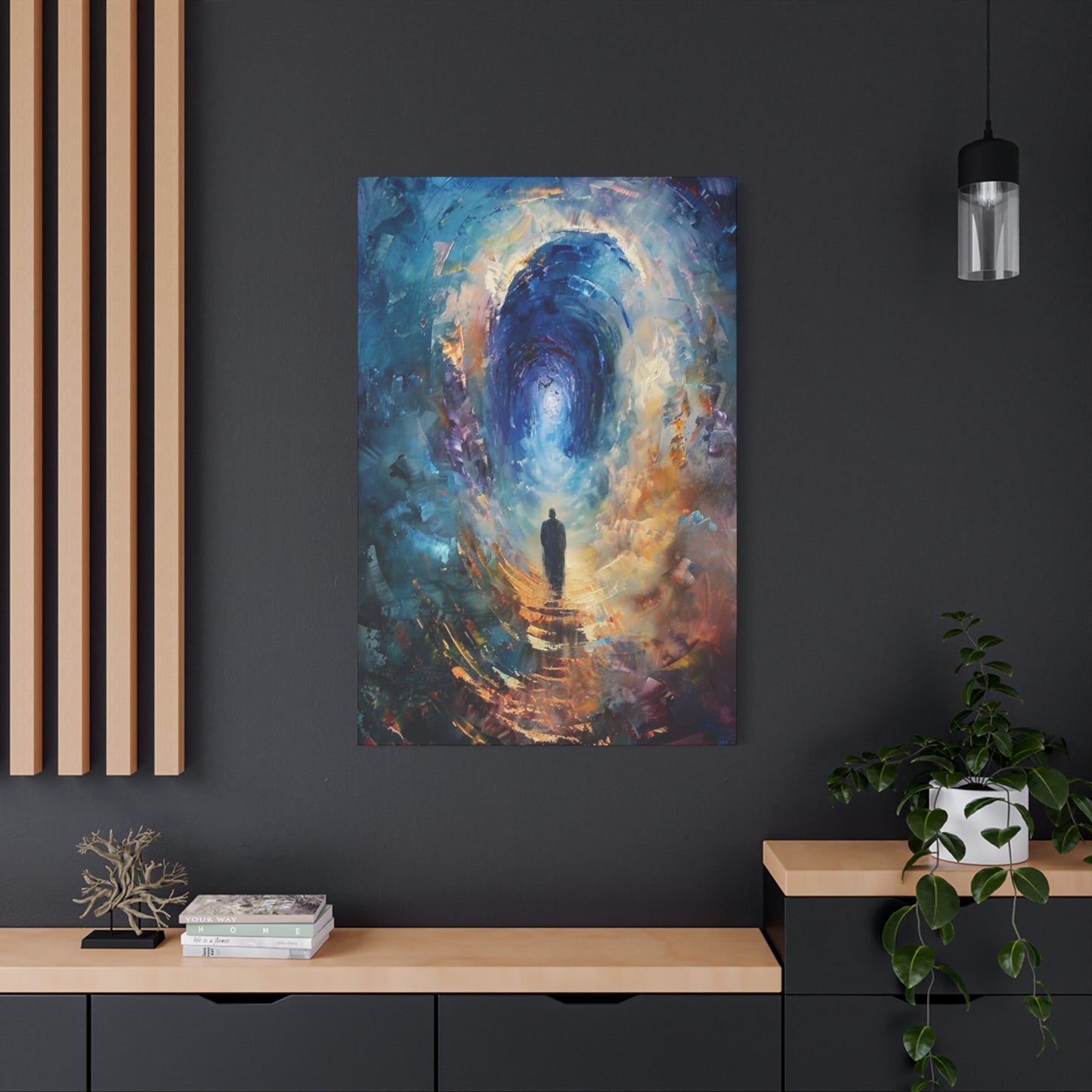God Path Colorful Wall Art Canvas Prints: Creating Divine Artistic Expressions for Modern Living
Divine imagery has captivated humanity throughout history, serving as a bridge between the earthly realm and spiritual dimensions. The concept of God's path represents more than mere religious symbolism; it embodies the universal human quest for meaning, purpose, and transcendence. When transformed into colorful wall art canvas prints, these sacred themes become powerful focal points that can transform any environment into a sanctuary of reflection and inspiration.
The artistic representation of divine pathways through vibrant canvas prints offers viewers an opportunity to contemplate their own spiritual journey while appreciating the aesthetic beauty of carefully crafted artwork. These pieces serve multiple purposes: they function as decorative elements, conversation starters, and sources of daily inspiration. The interplay of colors, symbols, and religious iconography creates a visual narrative that speaks to both believers and art enthusiasts alike.
Modern canvas printing technology has revolutionized how we experience religious art. High-quality reproductions now allow individuals to bring museum-worthy pieces into their homes, offices, and sacred spaces. The durability and vibrancy of contemporary canvas prints ensure that these spiritual messages remain clear and compelling for years to come, making them valuable investments in both artistic beauty and personal spiritual growth.
The selection of colors in divine pathway artwork plays a crucial role in conveying spiritual messages. Golden hues often represent divine light and enlightenment, while blues symbolize heavenly realms and infinite peace. Purples convey royalty and spiritual authority, while greens represent growth, renewal, and the natural world as God's creation. These color combinations work together to create emotionally resonant pieces that speak to the soul.
Historical Significance of Religious Artwork in Human Culture
Religious artwork has served as humanity's visual language for communicating with the divine for millennia. From the cave paintings of ancient civilizations to the magnificent frescoes of Renaissance masters, spiritual themes have consistently inspired artists to create works that transcend mere aesthetic appreciation. The tradition of depicting God's path through visual media reflects our innate desire to make the abstract concrete, the invisible visible, and the eternal accessible.
Ancient civilizations understood the power of religious imagery to unite communities, preserve teachings, and inspire devotion. Egyptian hieroglyphs told stories of journeys through the afterlife, while Greek and Roman art explored the relationship between mortals and immortals. These early examples established precedents for using visual storytelling to convey complex spiritual concepts that words alone might struggle to express.
The medieval period witnessed an explosion of religious artwork as Christianity spread throughout Europe. Illuminated manuscripts, stained glass windows, and stone carvings all served to educate largely illiterate populations about biblical stories and spiritual truths. The concept of the divine path became particularly prominent during this era, often depicted as literal roads leading to celestial cities or metaphorical journeys through moral landscapes.
Renaissance masters elevated religious art to new heights of technical excellence and emotional depth. Artists like Michelangelo, Leonardo da Vinci, and Raphael created works that continue to inspire viewers centuries later. Their innovations in perspective, color theory, and human anatomy allowed them to depict spiritual themes with unprecedented realism and emotional impact, setting standards that continue to influence contemporary religious artists.
The Protestant Reformation brought changes to religious artwork, with some traditions embracing simpler, more direct imagery while others continued to favor elaborate decorative styles. This diversity of approaches enriched the overall tradition of religious art, creating multiple pathways for spiritual expression through visual media. Today's colorful canvas prints draw from all these historical traditions, combining classical themes with contemporary artistic techniques.
Contemporary Canvas Printing Technology and Artistic Expression
Modern canvas printing technology has democratized access to high-quality religious artwork, making it possible for anyone to own museum-caliber reproductions of masterpieces or original contemporary pieces. Digital printing techniques now rival traditional painting methods in terms of color accuracy, durability, and visual impact. This technological revolution has opened new possibilities for artists and collectors alike.
High-resolution digital scanning and printing processes capture every nuance of original artworks, from subtle color gradations to fine textural details. Professional-grade canvas materials provide the perfect surface for reproducing both traditional paintings and digital art created specifically for canvas printing. The result is artwork that maintains its visual integrity while being accessible to a broader audience than ever before.
The chemistry of modern inks and coatings ensures that today's canvas prints resist fading, moisture damage, and other environmental factors that historically threatened artwork preservation. UV-resistant inks maintain their vibrancy for decades when properly displayed, while protective coatings guard against dust, fingerprints, and minor abrasions. These technical advances mean that spiritual artwork can be enjoyed in various settings without compromising its longevity.
Stretching and mounting techniques have also evolved to enhance the presentation and durability of canvas prints. Gallery-wrap methods create clean, professional appearances that eliminate the need for traditional framing while still providing structural support. Alternative mounting options allow for creative display configurations that can complement any architectural setting or decorative scheme.
Custom printing services now make it possible to create personalized spiritual artwork that reflects individual preferences, denominational traditions, or specific spiritual practices. Artists can work with clients to develop unique interpretations of divine pathway themes, incorporating personal symbols, favorite biblical passages, or meaningful color combinations. This personalization adds another layer of spiritual significance to already meaningful artwork.
Color Psychology and Spiritual Symbolism in Divine Artwork
The psychological impact of color in religious artwork extends far beyond mere aesthetic preference. Different hues evoke specific emotional responses and carry deep symbolic meanings that have developed over centuries of artistic tradition. Understanding these associations helps viewers appreciate the intentional choices artists make when creating spiritual imagery and guides collectors in selecting pieces that resonate with their personal spiritual journeys.
Red, often associated with passion, sacrifice, and divine love, appears frequently in depictions of Christ's sacrifice and God's overwhelming love for humanity. This powerful hue can energize viewers and remind them of the intensity of divine commitment to human salvation. When used in pathway imagery, red might represent the challenging but transformative nature of spiritual growth or the fire of purification that accompanies authentic spiritual development.
Blue traditionally represents peace, infinity, and divine truth. The vast expanse of sky and ocean naturally connects this color to concepts of eternity and transcendence. In religious artwork, blue often appears in depictions of heaven, divine robes, or peaceful spiritual states. Pathway imagery might use blue to suggest the serenity found in following God's will or the infinite nature of spiritual journey itself.
Yellow and gold symbolize divine light, wisdom, and enlightenment across many religious traditions. These warm, luminous colors suggest the presence of divine knowledge and the illumination that comes from spiritual understanding. Golden pathways in religious artwork often represent the way of righteousness or the light of divine guidance leading believers toward spiritual fulfillment.
Green represents growth, renewal, and the abundance of God's creation. This color connects spiritual themes to the natural world, reminding viewers that divine presence permeates all creation. Green pathways might symbolize the growth that occurs through spiritual practice or the renewed life that comes from following divine guidance. The calming effect of green can also promote contemplation and peaceful reflection.
Purple, historically associated with royalty and nobility, carries connotations of spiritual authority and divine majesty. This rich color appears in depictions of religious figures and sacred objects, emphasizing their exalted status. Purple elements in pathway imagery might represent the royal road of spiritual development or the majestic nature of divine calling.
Selecting Appropriate Themes for Different Settings
The placement and context of religious artwork significantly influence its impact and appropriateness. Different environments call for different approaches to spiritual imagery, and understanding these distinctions helps ensure that divine pathway artwork enhances rather than conflicts with its surroundings. Thoughtful selection creates harmonious relationships between artistic expression and environmental context.
Home environments offer the most flexibility for displaying religious artwork, as personal preference takes precedence over institutional or commercial considerations. Living rooms might feature large, dramatic pieces that serve as focal points for family gatherings and conversations. Bedrooms could incorporate more intimate, contemplative imagery that promotes peaceful rest and private reflection. Kitchen and dining areas might display artwork that celebrates abundance, gratitude, and the spiritual significance of sharing meals.
Office settings require more subtle approaches to religious expression, balancing personal faith with professional appropriateness. Smaller pieces with understated spiritual themes can provide personal inspiration without overwhelming colleagues or clients who might hold different beliefs. Abstract interpretations of divine pathways often work well in professional environments, offering spiritual significance to believers while appearing simply artistic to others.
Places of worship present unique opportunities and challenges for religious artwork selection. The denominational tradition, architectural style, and liturgical practices of each congregation influence which artistic approaches will be most appropriate and effective. Traditional churches might favor classical interpretations of divine themes, while contemporary worship settings might embrace more modern artistic expressions.
Healthcare facilities increasingly recognize the therapeutic value of spiritual artwork in promoting healing and comfort. Medical research supports the positive impact of meaningful visual imagery on patient outcomes, making religious artwork a valuable addition to healthcare environments. Gentle, hopeful interpretations of divine pathway themes can provide comfort to patients and families during difficult times.
Educational institutions must navigate complex considerations regarding religious expression while still acknowledging the historical and cultural significance of religious artwork. Academic settings might focus on the artistic and historical aspects of spiritual imagery while allowing viewers to draw their own spiritual conclusions. This approach respects diverse beliefs while preserving the educational value of religious artistic traditions.
Canvas Preparation and Material Selection for Optimal Results
The foundation of any exceptional canvas print lies in the careful selection and preparation of materials. Professional-grade canvas materials differ significantly from consumer-level options in terms of durability, print quality, and longevity. Understanding these differences helps ensure that spiritual artwork maintains its impact and beauty for years to come.
Cotton canvas remains the most popular choice for high-quality prints due to its excellent ink absorption, consistent texture, and proven durability. Premium cotton canvases undergo specialized treatments that enhance their receptivity to inks while preventing bleeding or color migration. The natural fiber structure of cotton creates subtle textural variations that add depth and authenticity to printed images.
Polyester canvas options offer enhanced durability and consistency, making them suitable for environments where moisture or temperature fluctuations might affect natural fiber materials. While polyester lacks some of the organic character of cotton, advanced manufacturing techniques have eliminated many of the artificial appearance issues that once plagued synthetic canvas materials.
Blended canvas materials attempt to combine the best characteristics of both cotton and polyester, offering improved durability while maintaining natural texture and appearance. These hybrid materials often provide optimal balance between performance and aesthetic quality, making them excellent choices for spiritual artwork intended for long-term display.
Canvas weight and weave patterns significantly influence the final appearance and durability of printed artwork. Heavier canvas weights provide more substantial feel and enhanced durability but may require more specialized mounting hardware. Fine weave patterns create smooth surfaces ideal for detailed imagery, while coarser weaves add texture that can enhance the artistic character of certain pieces.
Primer and coating applications prepare canvas surfaces for optimal ink adhesion and protection. Professional priming ensures even ink distribution and prevents color variations caused by inconsistent surface preparation. Protective coatings applied after printing guard against environmental damage while maintaining color vibrancy and preventing surface contamination.
Professional Printing Techniques for Religious Imagery
The technical aspects of professional canvas printing directly influence the quality and longevity of religious artwork. Advanced printing technologies now available to commercial printers far exceed the capabilities of consumer-grade equipment, making professional printing services essential for achieving museum-quality results in spiritual artwork reproduction.
Giclée printing represents the gold standard for fine art reproduction, utilizing sophisticated inkjet technology with extended color gamuts and exceptional detail resolution. This process can reproduce subtle color variations and fine details that traditional printing methods might miss, ensuring that spiritual imagery maintains its emotional impact and artistic integrity. The term "giclée" itself means "to spray" in French, referring to the precise droplet placement that creates seamless color transitions.
Color management systems ensure accurate color reproduction throughout the printing process, from initial digital files to final printed pieces. Professional printers use calibrated monitors, standardized lighting conditions, and sophisticated software to maintain color consistency across different printing sessions and equipment. This attention to color accuracy is particularly important for religious artwork, where specific colors carry symbolic meanings that must be preserved.
Ink formulations designed specifically for artistic applications offer enhanced longevity and color stability compared to standard commercial inks. Pigment-based inks resist fading and color shifts better than dye-based alternatives, making them essential for artwork intended for long-term display. Some specialized ink sets include additional colors beyond standard CMYK, allowing for more accurate reproduction of challenging hues like deep blues and rich purples common in religious imagery.
Resolution and detail optimization require careful balance between file size, printing speed, and final image quality. Professional printing services typically work with high-resolution files that capture every nuance of original artwork while optimizing data processing for efficient production. This technical expertise ensures that fine details in religious imagery, such as facial expressions or symbolic elements, remain clear and compelling in the final printed piece.
Quality control processes in professional printing facilities include multiple inspection points throughout production, ensuring that each piece meets established standards before release. Color accuracy checks, surface quality inspections, and dimensional verification help maintain consistency across multiple prints or large production runs. This attention to detail is particularly important when reproducing sacred imagery that will be scrutinized by viewers seeking spiritual inspiration.
Mounting and Display Considerations for Sacred Artwork
The presentation of religious canvas prints significantly influences their visual impact and spiritual effectiveness. Professional mounting techniques not only protect artwork from damage but also enhance its aesthetic appeal and ensure appropriate display positioning. Understanding various mounting options helps collectors make informed decisions about how best to present their spiritual artwork.
Gallery wrapping techniques create clean, modern presentations that eliminate the need for traditional frames while providing necessary structural support. This method involves stretching canvas around wooden stretcher bars, creating finished edges that allow for seamless wall mounting. Gallery wrapping works particularly well for contemporary interpretations of religious themes, where traditional framing might detract from the artistic impact.
Museum mounting methods prioritize conservation and longevity, using acid-free materials and archival techniques that prevent deterioration over time. These approaches might include UV-filtering glazing, climate-controlled mounting systems, and specialized hanging hardware designed to minimize stress on canvas materials. While more expensive than standard mounting options, museum-quality techniques ensure that valuable spiritual artwork remains in excellent condition for future generations.
Custom framing allows for personalization that complements specific decorational schemes while honoring the sacred nature of the artwork. Frame selection should consider both aesthetic compatibility and symbolic appropriateness, as ornate frames might enhance traditional religious imagery while simpler presentations better suit contemporary spiritual art. Professional framers experienced with religious artwork can provide guidance on appropriate materials and styles.
Lighting considerations play crucial roles in the effective display of canvas prints, as improper illumination can wash out colors, create glare, or contribute to premature fading. LED lighting systems offer excellent color rendering while minimizing heat generation that might damage canvas materials. Adjustable lighting allows for different presentation modes, from subtle accent lighting for contemplative viewing to brighter illumination for detailed study.
Positioning and placement strategies should consider both practical and spiritual factors when determining optimal locations for religious artwork. Eye-level mounting ensures comfortable viewing, while considering sight lines from various positions in the room maximizes the artwork's impact. Some spiritual traditions have specific guidelines for the placement of religious imagery that should be respected when displaying sacred artwork.
Digital Art Creation and Customization Options
The digital revolution has opened new possibilities for creating original religious artwork specifically designed for canvas printing. Digital art tools allow artists to experiment with color combinations, compositional arrangements, and symbolic elements in ways that would be difficult or impossible with traditional media. This flexibility makes digital creation particularly well-suited for developing personalized spiritual artwork.
Vector graphics programs enable the creation of scalable artwork that maintains crisp detail at any size, making them ideal for canvas prints intended for large format display. Religious symbols, geometric patterns, and typographic elements can be precisely controlled and easily modified to meet specific requirements or preferences. The mathematical precision of vector graphics can create perfectly symmetrical designs that reflect divine order and harmony.
Raster image editing provides tools for creating realistic textures, lighting effects, and atmospheric elements that add emotional depth to spiritual imagery. Digital painting techniques can simulate traditional media like oil paints or watercolors while offering unlimited undo capabilities and non-destructive editing options. These tools allow artists to explore multiple interpretations of divine pathway themes without committing to irreversible changes.
Custom color palette development ensures that digital artwork complements specific environmental contexts or personal preferences. Artists can create harmonious color schemes that work with existing architectural elements or decorative themes while maintaining the symbolic significance of traditional religious colors. Digital color tools also allow for precise matching of institutional colors or denominational preferences.
Layered composition techniques in digital art creation enable complex imagery development through the combination of multiple visual elements. Background landscapes, symbolic overlays, textual elements, and lighting effects can all be managed as separate layers, allowing for fine-tuned control over the final composition. This approach facilitates easy customization of existing designs to meet specific client requirements.
Typography integration adds textual elements that can enhance the spiritual message of visual imagery. Digital font libraries include numerous options suitable for religious applications, from traditional calligraphic styles to contemporary sans-serif designs. Careful typography selection ensures that textual elements complement rather than compete with visual components while maintaining readability and aesthetic appeal.
Conservation of Canvas Artwork
Proper maintenance and conservation techniques significantly extend the lifespan of canvas prints while preserving their artistic and spiritual value. Understanding basic conservation principles helps collectors protect their investments in religious artwork while ensuring that these meaningful pieces remain available for future appreciation and inspiration.
Environmental controls play crucial roles in canvas print preservation, as excessive humidity, temperature fluctuations, and direct sunlight can all cause damage over time. Maintaining stable indoor conditions within recommended ranges prevents canvas expansion and contraction that might lead to cracking or warping. Professional conservation guidelines typically recommend humidity levels between 45-55% and temperatures between 65-70°F for optimal artwork preservation.
Cleaning procedures for canvas prints require gentle techniques that remove dust and surface contamination without damaging ink layers or canvas fibers. Soft-bristled brushes, microfiber cloths, and specialized conservation cleaning products can safely maintain surface cleanliness when used properly. Regular light cleaning prevents the accumulation of contaminants that might require more aggressive treatment methods later.
Protective measures include positioning artwork away from high-traffic areas where accidental contact might cause damage, using UV-filtering window films or artwork glazing to prevent sun damage, and ensuring adequate air circulation to prevent moisture accumulation. These preventive approaches are far more effective and economical than restoration treatments required after damage occurs.
Professional conservation services become necessary when canvas prints show signs of significant damage, fading, or deterioration. Conservation specialists can assess damage, recommend appropriate treatment options, and perform restoration work using techniques that preserve the artistic integrity of original pieces. Early intervention often prevents minor problems from becoming major restoration challenges.
Documentation and record keeping help track the condition and history of valuable canvas prints, providing important information for insurance purposes and future conservation decisions. Photographs documenting the artwork's condition at various times, records of environmental conditions, and maintenance activities create valuable archives that support ongoing conservation efforts.
Storage considerations for canvas prints not currently on display include proper support systems that prevent creasing or sagging, protective coverings that guard against dust and light exposure, and climate-controlled environments that maintain stable conditions. Rolled storage should be avoided for stretched canvases, while flat storage requires adequate support to prevent pressure damage.
Cultural and Denominational Variations in Religious Art
Different religious traditions and cultural backgrounds bring unique perspectives to the artistic representation of divine themes, creating rich diversity in spiritual artwork interpretations. Understanding these variations helps collectors select pieces that align with their particular faith traditions while appreciating the broader tapestry of human spiritual expression through art.
Christian artistic traditions encompass numerous denominational approaches, from the elaborate iconographic traditions of Eastern Orthodox churches to the simplified imagery preferred by many Protestant denominations. Catholic artistic heritage includes extensive use of religious imagery in worship and devotional contexts, while some Protestant traditions emphasize symbolic rather than literal representations of spiritual themes.
Biblical pathway imagery varies significantly across different Christian traditions, with some emphasizing literal interpretations of scriptural passages while others prefer metaphorical or allegorical approaches. The straight and narrow path, the road to Damascus, and the valley of the shadow of death represent just a few of the pathway themes that appear in Christian artwork, each carrying specific theological significance.
Islamic artistic traditions generally avoid representational imagery of divine figures while embracing geometric patterns, calligraphy, and abstract designs that reflect spiritual principles. The concept of spiritual pathways appears in Islamic art through intricate maze-like patterns that represent the soul's journey toward divine understanding, often incorporating verses from the Quran in elegant calligraphic presentations.
Jewish artistic expressions often focus on symbolic elements rather than representational imagery, with particular emphasis on Hebrew calligraphy, ceremonial objects, and geometric patterns derived from religious texts. The journey theme appears in Jewish art through depictions of the Exodus, pilgrimage festivals, and mystical concepts from Kabbalistic traditions.
Eastern religious traditions bring different aesthetic sensibilities to spiritual pathway imagery, often emphasizing natural elements, cyclical patterns, and meditation-inspired compositions. Buddhist and Hindu influences contribute concepts of spiritual wheels, lotus pathways, and mountain journeys that represent enlightenment processes unique to these traditions.
Contemporary interfaith approaches attempt to create spiritual artwork that speaks to universal human experiences while respecting the specific traditions from which various symbols and themes originate. These inclusive interpretations often focus on common themes like light, journey, and transcendence that appear across multiple religious traditions.
Therapeutic Benefits of Spiritual Art
Scientific research increasingly supports the psychological and therapeutic benefits of viewing meaningful artwork, particularly imagery with spiritual or inspirational themes. The presence of religious canvas prints in various environments can contribute to improved mental health, enhanced emotional well-being, and increased resilience in facing life challenges.
Stress reduction represents one of the most documented benefits of exposure to spiritual artwork, with studies showing measurable decreases in cortisol levels and blood pressure when individuals spend time viewing meaningful religious imagery. The contemplative nature of divine pathway artwork encourages slow, thoughtful observation that naturally promotes relaxation and stress relief.
Emotional regulation benefits arise from the symbolic content and color choices in spiritual artwork, which can help individuals process complex feelings and find emotional balance. The hopeful themes common in religious pathway imagery provide positive focal points during difficult periods, while the permanence of canvas prints offers consistent sources of inspiration and comfort.
Meditation and contemplation practices can be enhanced through the presence of appropriate spiritual artwork that provides focal points for reflection and prayer. The visual elements in divine pathway imagery often incorporate traditional meditation symbols and themes that support various forms of spiritual practice, from Christian contemplation to Buddhist mindfulness techniques.
Cognitive benefits include improved focus, enhanced creative thinking, and increased problem-solving abilities that can result from regular exposure to complex, meaningful imagery. Religious artwork often incorporates sophisticated symbolic systems that engage multiple cognitive processes simultaneously, providing mental stimulation that supports overall brain health.
Social connection facilitated by spiritual artwork includes opportunities for meaningful conversations about faith, values, and life purpose. Canvas prints with religious themes often serve as conversation starters that help individuals connect over shared beliefs or explore different spiritual perspectives in respectful, constructive ways.
Healing environments in healthcare settings benefit significantly from the inclusion of appropriate spiritual artwork, with research showing improved patient outcomes, reduced anxiety, and enhanced overall satisfaction when meaningful imagery is present. The hope and comfort conveyed by divine pathway themes can be particularly beneficial for individuals facing serious illnesses or life transitions.
Business Considerations wall art
The growing market for religious canvas prints reflects increasing consumer interest in meaningful home décor and spiritual expression. Understanding commercial aspects of this market helps both artists and retailers develop successful approaches to creating and selling spiritual artwork that meets diverse customer needs while respecting the sacred nature of religious themes.
Market demographics for religious artwork span multiple age groups, income levels, and denominational affiliations, creating opportunities for diverse artistic approaches and price points. Baby boomers represent a significant market segment with established homes and disposable income for artwork purchases, while younger generations often seek contemporary interpretations of traditional spiritual themes.
Pricing strategies must balance artistic value, production costs, and market accessibility while respecting the meaningful nature of religious imagery. Limited edition prints can command higher prices while maintaining exclusivity, while open edition prints provide affordable access to spiritual artwork for broader audiences. Custom work typically commands premium prices but offers unique value propositions for discerning collectors.
Distribution channels for religious artwork include traditional art galleries, religious bookstores, online marketplaces, and direct artist sales. Each channel requires different marketing approaches and may serve distinct customer segments with varying preferences for artwork styles, sizes, and price ranges. Understanding these differences helps optimize sales strategies for specific market segments.
Copyright and licensing considerations are particularly important when dealing with religious imagery, as many traditional religious artworks remain under copyright protection. Original contemporary interpretations avoid these issues while potentially creating new intellectual property opportunities. Proper attribution and licensing ensure ethical business practices while protecting both artists and retailers from legal complications.
Quality assurance becomes especially important when dealing with spiritual artwork, as customers often have high emotional investments in these purchases. Comprehensive quality control processes, clear return policies, and excellent customer service help build trust and reputation in this market segment where word-of-mouth recommendations carry significant weight.
International markets present both opportunities and challenges for religious artwork sales, as different countries have varying regulations regarding religious expression and art importation. Cultural sensitivity and appropriate marketing approaches are essential for successful international expansion while respecting local customs and beliefs.
Applications and Institutional Use art
Educational institutions increasingly recognize the value of religious artwork in teaching history, culture, and artistic techniques while fostering cross-cultural understanding and respect for diverse spiritual traditions. Canvas prints offer practical advantages for educational settings, providing durable, affordable alternatives to original artworks while maintaining visual impact.
Art history curricula benefit significantly from high-quality reproductions of religious masterpieces that allow students to study artistic techniques, cultural contexts, and historical developments in religious expression. Canvas prints can provide detailed views of brushwork, color relationships, and compositional strategies that might be difficult to observe in museum settings or small textbook reproductions.
Religious studies programs use spiritual artwork to illustrate theological concepts, denominational differences, and historical developments in religious thought. Visual imagery often communicates complex spiritual ideas more effectively than text alone, making canvas prints valuable teaching tools for exploring diverse religious traditions and practices.
Cultural studies applications include examination of how different societies express spiritual beliefs through artistic media, providing insights into values, priorities, and worldviews across various cultures and time periods. Comparative analysis of religious artwork from different traditions helps students develop cultural literacy and appreciation for human diversity.
Museum educational programs often incorporate reproductions alongside original pieces to create comprehensive learning experiences that accommodate different learning styles and accessibility needs. Canvas prints allow for hands-on examination and discussion that might not be possible with irreplaceable original artworks, enhancing educational value while protecting cultural treasures.
Community outreach initiatives use religious artwork as bridges for interfaith dialogue and cultural exchange, providing common ground for discussing shared human experiences and diverse spiritual perspectives. Carefully selected canvas prints can facilitate respectful conversations about religious diversity while celebrating common themes of hope, love, and spiritual seeking.
Special needs applications include therapeutic uses of spiritual artwork in educational settings serving individuals with developmental disabilities, emotional challenges, or learning differences. The calming effects and positive messaging of religious imagery can support various therapeutic and educational goals while providing meaningful engagement opportunities.
Specifications and Quality Standards
Professional standards for religious canvas prints encompass multiple technical aspects that collectively determine the final quality and longevity of printed artwork. Understanding these specifications helps both producers and consumers make informed decisions about artwork creation and selection processes.
Resolution requirements for canvas printing typically range from 150-300 DPI depending on viewing distance and image content, with detailed religious imagery requiring higher resolutions to maintain clarity of symbolic elements and fine artistic details. File preparation must consider both print resolution and color space requirements to ensure accurate reproduction of original artwork.
Color gamut specifications determine the range of colors that can be accurately reproduced through specific printing processes and ink combinations. Extended gamut printing systems offer broader color ranges that better capture the subtle hues and rich saturations common in religious artwork, particularly important for reproducing traditional gold leaf effects and deep spiritual blues.
Ink longevity standards specify expected fade resistance under various display conditions, with archival quality prints typically warranting 75-100 years of display life under proper conditions. Light stability testing provides quantitative measures of color permanence that help determine appropriate display environments and expected lifespan for printed artwork.
Canvas substrate specifications include fiber content, weight, texture, and primer formulations that affect both print quality and durability. Professional grade canvas materials undergo testing for dimensional stability, ink absorption, and aging characteristics to ensure consistent performance over time. Acid-free materials prevent chemical degradation that might affect artwork longevity.
Mounting and stretching standards address proper tension, corner construction, and hardware specifications that maintain canvas integrity while providing secure wall mounting options. Professional stretching techniques prevent corner lifting, surface warping, and other structural problems that might compromise artwork appearance or stability.
Packaging and shipping requirements protect finished canvas prints from damage during transport while maintaining proper environmental conditions. Specialized packaging materials and techniques accommodate the specific vulnerabilities of canvas prints, including sensitivity to moisture, pressure, and temperature variations during shipping.
Environmental Considerations and Sustainability
The environmental impact of canvas print production has become an increasingly important consideration for both producers and consumers of religious artwork. Sustainable practices in artwork production reflect stewardship values that align with many spiritual traditions' emphasis on caring for creation and future generations.
Eco-friendly canvas materials include organic cotton options that avoid pesticide use during fiber production, recycled content canvases that reduce waste in manufacturing processes, and sustainably sourced wood stretchers that support responsible forest management practices. These choices allow consumers to express spiritual values through their purchasing decisions while supporting environmental sustainability.
Water-based ink formulations reduce volatile organic compound emissions compared to solvent-based alternatives while maintaining excellent print quality and longevity. These environmentally friendly inks often exceed performance standards of traditional formulations while supporting healthier indoor air quality in production facilities and display environments.
Energy-efficient printing technologies reduce the carbon footprint of canvas print production through improved equipment design and optimized production processes. LED UV curing systems, heat recovery systems, and efficient color management reduce energy consumption while maintaining or improving output quality standards.
Waste reduction strategies in canvas print production include digital proofing systems that eliminate paper waste, optimized cutting patterns that minimize canvas waste, and recycling programs for production byproducts. These approaches reduce environmental impact while often improving production efficiency and cost effectiveness.
Local sourcing initiatives reduce transportation-related environmental impacts while supporting regional economies and ensuring fresher materials. Local partnerships between artists, printers, and suppliers create sustainable business networks that benefit communities while reducing environmental footprints of artwork production.
End-of-life considerations include recyclability of canvas materials, stretcher wood reuse options, and proper disposal methods for inks and chemical components. Designing for disassembly allows artwork components to be properly recycled or repurposed when pieces reach the end of their display life, supporting circular economy principles in religious artwork markets.
Conclusion
The world of God path colorful wall art canvas prints represents a fascinating intersection of ancient spiritual wisdom and modern artistic technology. These meaningful pieces serve multiple purposes in contemporary life, functioning as sources of daily inspiration, focal points for prayer and meditation, conversation starters for spiritual dialogue, and beautiful expressions of faith that enhance living and working environments.
The journey from traditional religious artwork to contemporary canvas prints reflects humanity's ongoing effort to make sacred wisdom accessible and relevant to modern life. Digital printing technologies have democratized access to high-quality spiritual artwork, allowing individuals from all economic backgrounds to bring meaningful imagery into their personal environments. This accessibility represents a significant development in the history of religious art, breaking down barriers that once limited spiritual artwork to wealthy collectors or institutional settings.
The careful consideration of color psychology, symbolic meaning, and cultural context in religious canvas prints demonstrates the sophisticated understanding required to create effective spiritual artwork. Artists and producers who succeed in this market combine technical expertise with deep appreciation for the sacred nature of their work, resulting in pieces that honor both artistic traditions and spiritual significance.
The therapeutic and psychological benefits documented through scientific research validate what believers have long understood intuitively: meaningful visual imagery can profoundly impact mental and emotional well-being. The presence of spiritual artwork in homes, offices, healthcare facilities, and educational institutions contributes to environments that support human flourishing while acknowledging the transcendent dimensions of existence.
Environmental sustainability considerations in canvas print production reflect broader cultural shifts toward responsible consumption and creation stewardship. The availability of eco-friendly materials and production processes allows consumers to express spiritual values through their purchasing decisions while supporting environmental protection efforts that align with many religious traditions' emphasis on caring for creation.
The commercial success of religious canvas print markets demonstrates strong consumer demand for meaningful, high-quality spiritual artwork that fits contemporary lifestyles and budgets. This market vitality supports artists, craftspeople, and retailers while making spiritual expression through visual media increasingly accessible to diverse populations.
Educational applications of religious canvas prints provide valuable tools for teaching art history, cultural studies, and religious literacy while fostering cross-cultural understanding and respect for diverse spiritual traditions. These applications extend the impact of spiritual artwork beyond private devotional use to broader societal benefits in education and cultural appreciation.
Looking toward the future, emerging technologies offer exciting possibilities for enhanced engagement with religious artwork while raising important questions about maintaining authenticity and reverence in digital environments. The challenge lies in embracing beneficial innovations while preserving the essential contemplative qualities that make spiritual artwork meaningful and transformative.
The enduring appeal of God path colorful wall art canvas prints ultimately rests on their ability to connect viewers with timeless spiritual truths through beautiful, accessible visual expression. Whether serving as daily reminders of divine presence, sources of comfort during difficult times, or focal points for community worship and fellowship, these remarkable pieces continue traditions of spiritual artistic expression that have enriched human culture for millennia.
As we move forward in an increasingly digital and fast-paced world, the simple act of pausing to contemplate meaningful imagery becomes ever more valuable. Religious canvas prints provide accessible opportunities for these moments of reflection, offering windows into transcendent realms that remind us of life's deeper purposes and ultimate meanings. In this way, contemporary spiritual artwork continues to fulfill art's highest calling: helping humanity recognize and respond to the sacred dimensions of existence that give life its ultimate meaning and purpose.

















